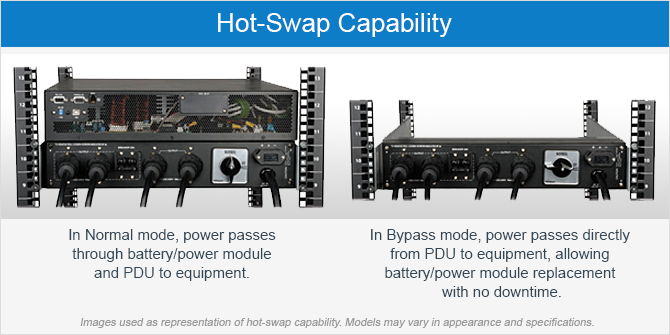You’ve just purchased a UPS service contract and are now breathing a sigh of relief that if your UPS goes down, you’re covered for even a catastrophic failure. Well, you may want to take another look at the fine print of the contract again to see exactly what your contract covers. Coverage levels vary, and contracted response times can be as low as 2 hours to as long as 24 hours. Can your network users handle even a one hour loss of service? Not likely.
Any amount of downtime is a major problem, but maintenance contracts alone don’t guarantee uptime. For instance, let’s consider the service provider who will perform your UPS maintenance. Do you know if they have the available talent to fix your UPS when they say they will? Do they have the financial resources to source the repair parts in a timely fashion or the ability to obtain obsolete parts for out-of-warranty UPS systems? Most of all, consider the human factor in servicing UPS systems: what happens when the service person brings the wrong part or the wrong version of the part to fix your UPS!
Needless to say, UPS maintenance is important. All studies reveal that regular maintenance extends the life expectancy of UPS systems and batteries. But relying on service contracts alone to cover you may not provide the solid guarantee you’re hoping for because of the real costs that go beyond the nominal cost of UPS service and maintenance calls. (A recent Globalscape study found that for most enterprises an hour of downtime was estimated to cost between $250,000 and $500,000.) So, the real issue is not maintenance service coverage per se but what systems are in place to both ensure uptime and make your UPS more serviceable in order to keep the mean time to repair (MTTR) very low?
Ensuring uptime during a UPS failure is a requirement that should be addressed at the beginning of the procurement process and well before UPS maintenance needs to be considered. You should ask yourself prior to buying a UPS system whether it has the systems in place to ensure it will supply power during a UPS failure.
Automatic and Maintenance Bypass Systems
The most common way to ensure uptime in a UPS failure is through the use of bypass systems. Bypass systems come in two forms: internal (automatic) and maintenance (user-operated). An internal bypass is an automatic function of a UPS system such that when the unlikely event of a UPS internal fault occurs, the UPS will transfer itself to bypass power to keep connected equipment powered. A maintenance bypass switch is a user-operated device so that when the UPS needs to be repaired or replaced, it can be operated to completely isolate the UPS from electrical power so it is safe for a user to remove the UPS yet maintain power to connected equipment. Internal and maintenance bypass systems ensure uptime in failure mode and, without them, downtime, even a small amount, can be experienced by a network.

If bypass systems ensure uptime in a UPS failure or during maintenance, what ensures a low MTTR? Like any other kind of product, a UPS can fail and will need to be replaced in whole or part to restore it to normal operation. If the maintenance requires a technician or an engineer with specialized skills to find the malfunctioning component, replace it, and restore the UPS to normal operation, you have a UPS that will have a very high MTTR. The only way this problem can be averted is when a UPS is designed with modularity.
Modular UPS Systems Decrease Mean Time to Repair (MTTR)
Modular UPS systems are designed with self-contained, pluggable modules rather than discrete components soldered, screwed or riveted throughout a UPS enclosure. So, instead of troubleshooting the non-modular UPS down to the component level, a user with a modular UPS only needs to swap out a single power module to fix the UPS. The advantage of UPS modularity is that it enables a non-technical user to replace a UPS power module or batteries when the UPS is in maintenance bypass mode. This capability is commonly called “hot-swapping.”
Moreover, modularity combined with maintenance bypass systems provide flexibility in the repair process. Maintenance can be accomplished at a convenient time and in a matter of minutes, drastically decreasing the MTTR and the inconvenience to network users. Modular UPS systems don’t necessarily require expensive onsite maintenance contracts therefore many of the hidden costs and unpredictability associated with UPS service and maintenance are eliminated.





